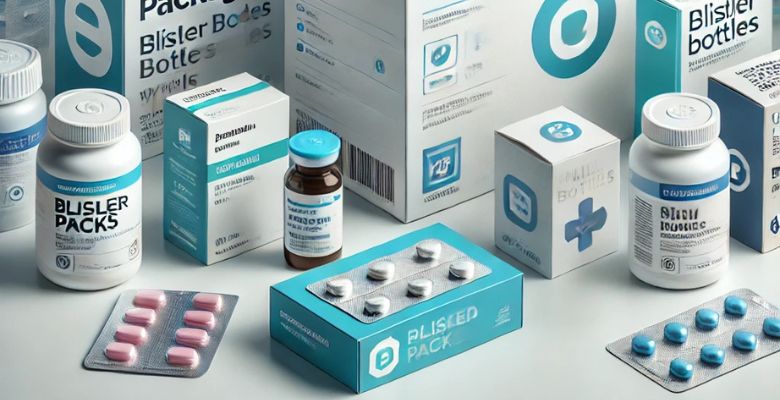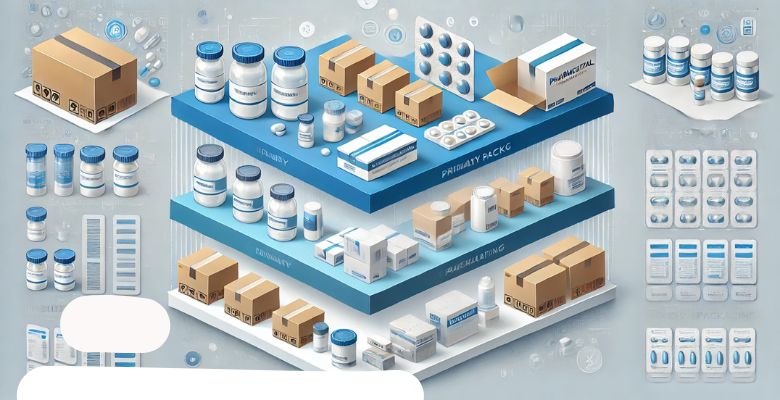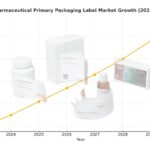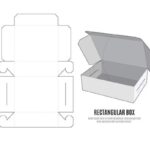When you think about pharmaceuticals, what’s the first thing that comes to mind? The pill inside the bottle? The box it came in? Or maybe the bulk packaging that ensures it reaches pharmacies safely? Each of these packaging layers plays a vital role in ensuring that medications are protected, marketed, and transported effectively.
In this blog, we’ll explore the three critical layers of pharmaceutical packaging—primary, secondary, and tertiary—and how they work together to ensure safety, efficiency, and sustainability.
Primary Packaging: The First Line of Defense
Primary packaging is the packaging that comes into direct contact with the drug product. It is often the most crucial layer because it protects the product from contamination and ensures that its integrity remains intact throughout its shelf life.
Why is primary packaging so important?
Without it, medications can become contaminated or lose their potency. Primary packaging keeps drugs stable, ensuring they remain effective for patients.
Functions of Primary Packaging:
- Ensures product safety and efficacy: By acting as a barrier, it prevents contamination and degradation.
- Maintains drug stability: The right packaging can extend the shelf life of a product, maintaining its effectiveness.
Common Examples:
- Blister packs: Protect individual pills from moisture and air.
- Syringes and vials: Maintain the sterility of injectable drugs.
- Bottles: Preserve liquids and capsules from environmental factors.
| Packaging Type | Example | Purpose |
| Blister Packs | Tablets, Capsules | Protects from moisture and air |
| Syringes & Vials | Injectable drugs | Maintains sterility |
| Bottles | Liquids, Capsules | Prevents exposure to contaminants |
Studies and Research:
- Regulatory guidelines: Strict regulations govern the materials used in primary packaging to ensure drug safety. For example, blister packs must meet specific requirements to maintain the medication’s efficacy.
- Research on drug stability: Studies show that drugs in properly sealed primary packaging retain their effectiveness for longer periods.
Secondary Packaging: Protection and Branding

If you’ve ever noticed the colorful box your medication comes in, that’s secondary packaging. It encases the primary packaging and serves a dual purpose—protecting the drug during transportation and acting as a marketing tool.
What’s the role of secondary packaging?
Think of secondary packaging as the marketing team. It ensures that the drug is not only safely transported but also grabs the consumer’s attention through branding and information display.
Key Functions:
- Provides extra protection: Secondary packaging safeguards the primary packaging from physical damage during handling and shipping.
- Enables branding and information display: This is where pharmaceutical companies showcase their branding, along with important drug information like dosage instructions and expiration dates.
Common Examples:
- Cartons: These provide structure and a place for branding.
- Shrink wraps and folding boxes: They offer additional protection and grouping for individual primary packages.
Studies and Examples:
- Impact of branding on consumer trust: Research suggests that well-designed secondary packaging builds trust between consumers and pharmaceutical companies. People tend to trust products with clear, professional packaging more.
- Packaging optimization: Case studies demonstrate how optimizing secondary packaging for transportation can reduce costs and prevent product damage.
| Packaging Type | Example | Purpose |
| Cartons | Branded boxes for bottles | Protects during shipping and offers branding |
| Shrink Wraps & Boxes | Multiple blister packs | Groups primary packages for easy handling |
Tertiary Packaging: Bulk Transport and Efficiency
When medications are transported in bulk, they are often grouped together in tertiary packaging. This layer ensures that the secondary packages are safely and efficiently handled during large-scale transportation.
What Makes Tertiary Packaging Essential?
Imagine shipping thousands of cartons of medication across the country. Without proper tertiary packaging, those cartons could shift during transport, leading to damaged goods and financial losses.
Functions of Tertiary Packaging:
- Ensures safe handling during bulk transportation: By grouping secondary packages, tertiary packaging makes it easier to transport large quantities without damage.
- Protects secondary packaging: It acts as a barrier, preventing physical damage during shipping.
Common Examples:
- Pallets: Used to transport large quantities of secondary-packaged goods.
- Crates and containers: Offer structural support for bulk shipments.
Research:
- Logistic studies: Studies show that optimized tertiary packaging can significantly reduce transportation costs and minimize product damage.
- Innovations in cost reduction: Companies are constantly looking for ways to make tertiary packaging more efficient, using lightweight materials that still offer protection.
| Tertiary Packaging Type | Example | Purpose |
| Pallets | Grouped boxes | Efficient handling and transport |
| Crates & Containers | Bulk shipping units | Protects during large-scale distribution |
Read Also: What is SIOC Packaging: Benefits and Guidelines
Packaging and Sustainability Trends

In today’s world, sustainability is more than just a buzzword—it’s a necessity. The pharmaceutical industry is no exception, with increasing demand for eco-friendly packaging solutions, especially in secondary and tertiary packaging.
Sustainability in Secondary Packaging:
There’s a growing focus on using recyclable materials and reducing packaging waste. Pharmaceutical companies are now integrating eco-friendly options into their packaging designs without compromising on protection or branding.
Examples of Sustainable Practices:
- Recyclable materials: Many companies are shifting towards using 100% recyclable cartons and shrink wraps for secondary packaging.
- Consumer preferences: Studies show that consumers prefer brands that use sustainable packaging, and they’re even willing to pay more for eco-friendly options.
Case Studies:
- Companies like Pfizer have implemented sustainable packaging designs, reducing their carbon footprint while maintaining the integrity of their products.
- Innovations in tertiary packaging include lightweight materials and reusable pallets, cutting down on transportation costs and environmental impact.
Read Also: Unlocking the Benefits of Frustration-Free Packaging for Businesses and Consumers
Conclusion: Innovating for the Future
Understanding the different layers of pharmaceutical packaging is crucial for ensuring the safe and efficient distribution of drugs. From protecting the drug at the primary level to branding at the secondary and bulk transport at the tertiary, each layer plays a vital role.
As sustainability becomes more important, innovating packaging materials and designs is no longer optional—it’s a must. Companies that prioritize eco-friendly, efficient packaging will not only reduce their environmental impact but also gain consumer trust.
Ready to optimize your packaging?
Connect with our experts today to explore custom packaging solutions that ensure safety, efficiency, and sustainability.





